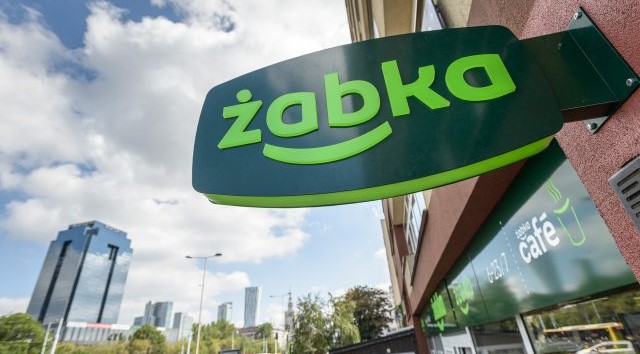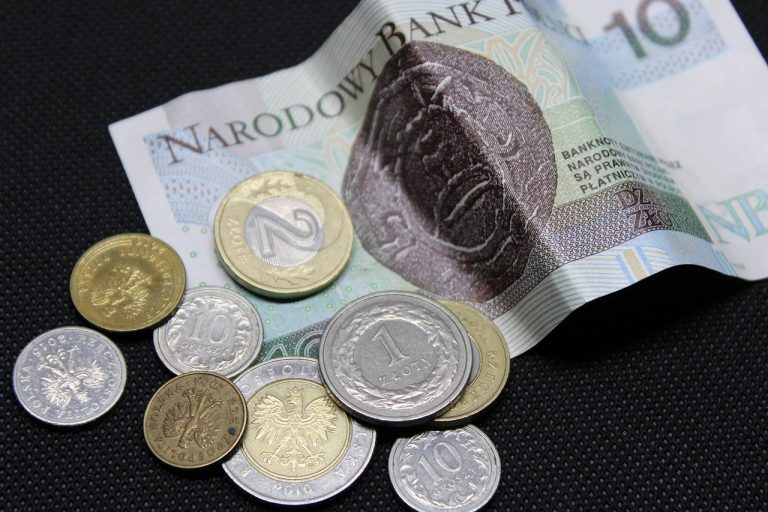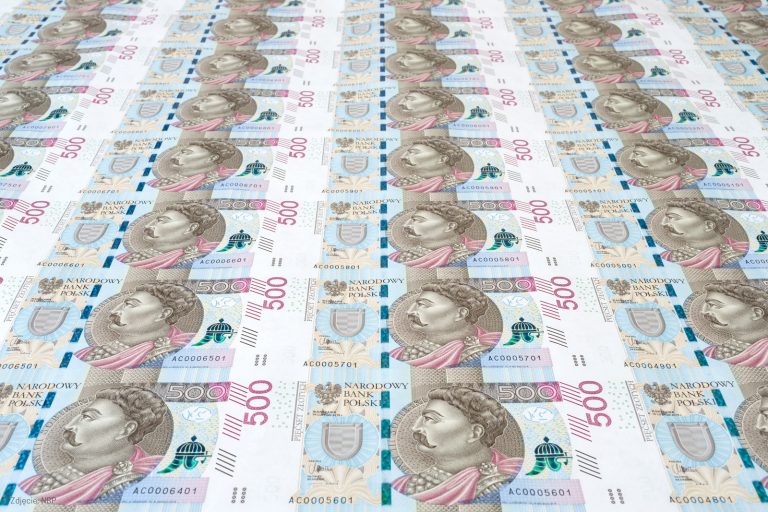Poles’ purchasing power 33% lower than European average
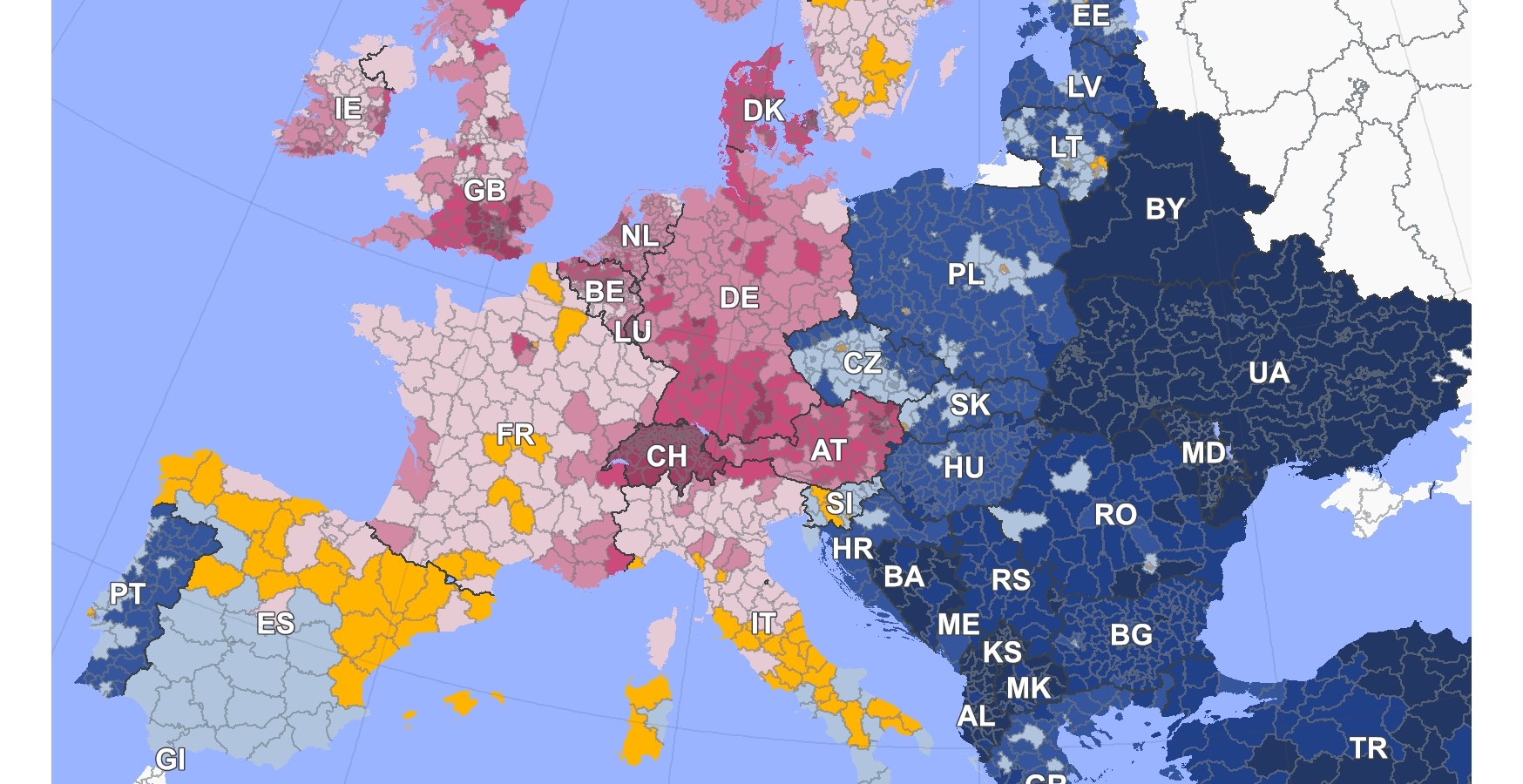
Keep our news free from ads and paywalls by making a donation to support our work!
Notes from Poland is run by a small editorial team and is published by an independent, non-profit foundation that is funded through donations from our readers. We cannot do what we do without your support.
People in Poland have, on average, €12,561 (54,637 zloty) a year in disposable income, a new report shows. That is 33% below the average European and places Poland 27th among 42 European countries in terms of purchasing power, one position higher than last year.
The annual purchasing power index compiled by GfK, the largest market research company in Germany, looks at how much people have to spend on food, housing, services, energy costs, private pensions, insurance, holidays, mobility and consumer purchases after paying taxes.
Its report for 2024 found that the purchasing power of the average European was €18,768. There were, however, large disparities between countries, as well as between regions within many countries.
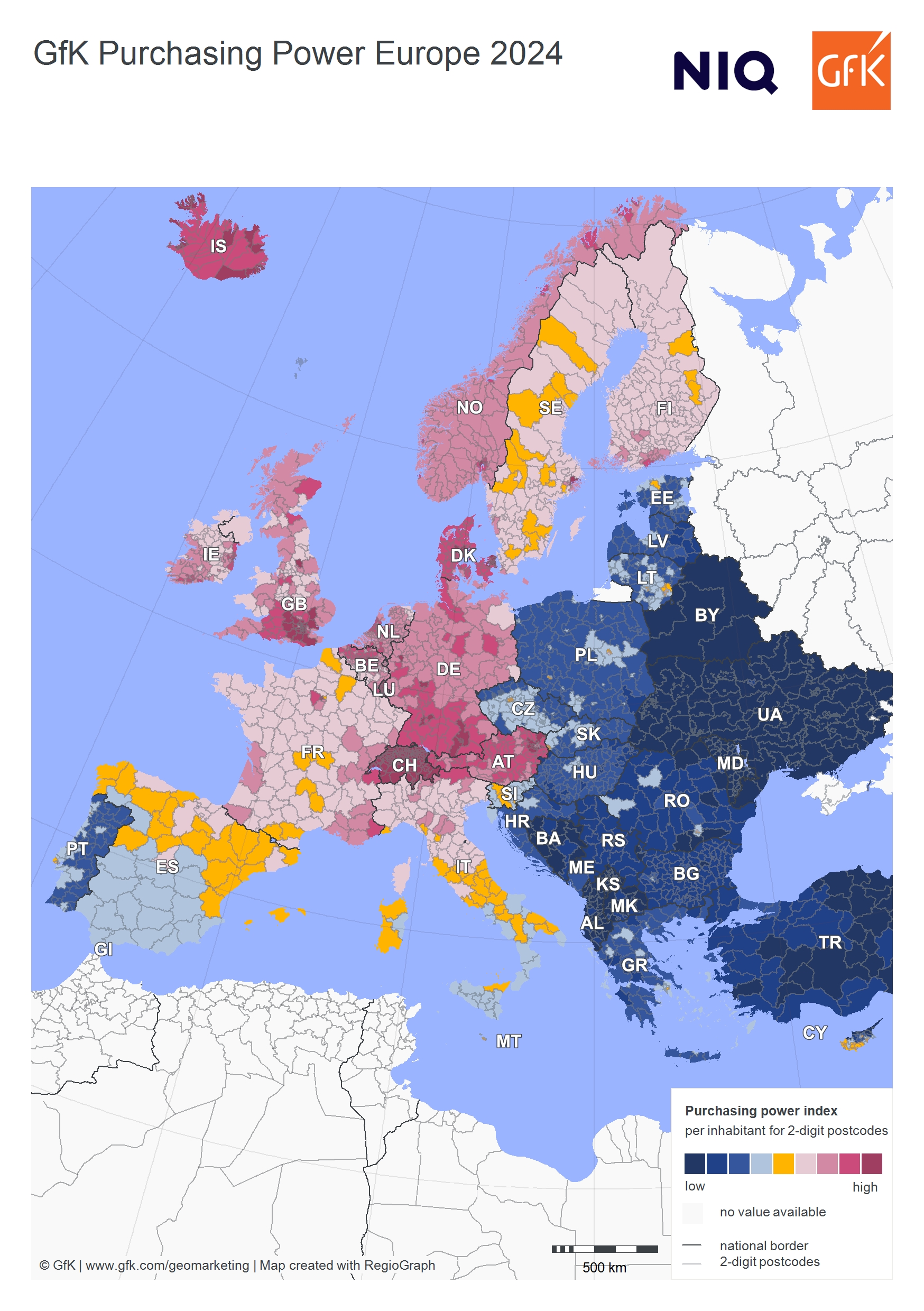
Purchasing power was highest in Liechtenstein (€70,180), Switzerland (€52,566) and Luxembourg (€41,785) while the lowest figure was found in war-torn Ukraine (€2,878).
Within the Central and Eastern European region, Poland’s purchasing power was below the Czech Republic (€14,106) but ahead of Hungary (€11,570) and Romania (€9,092).
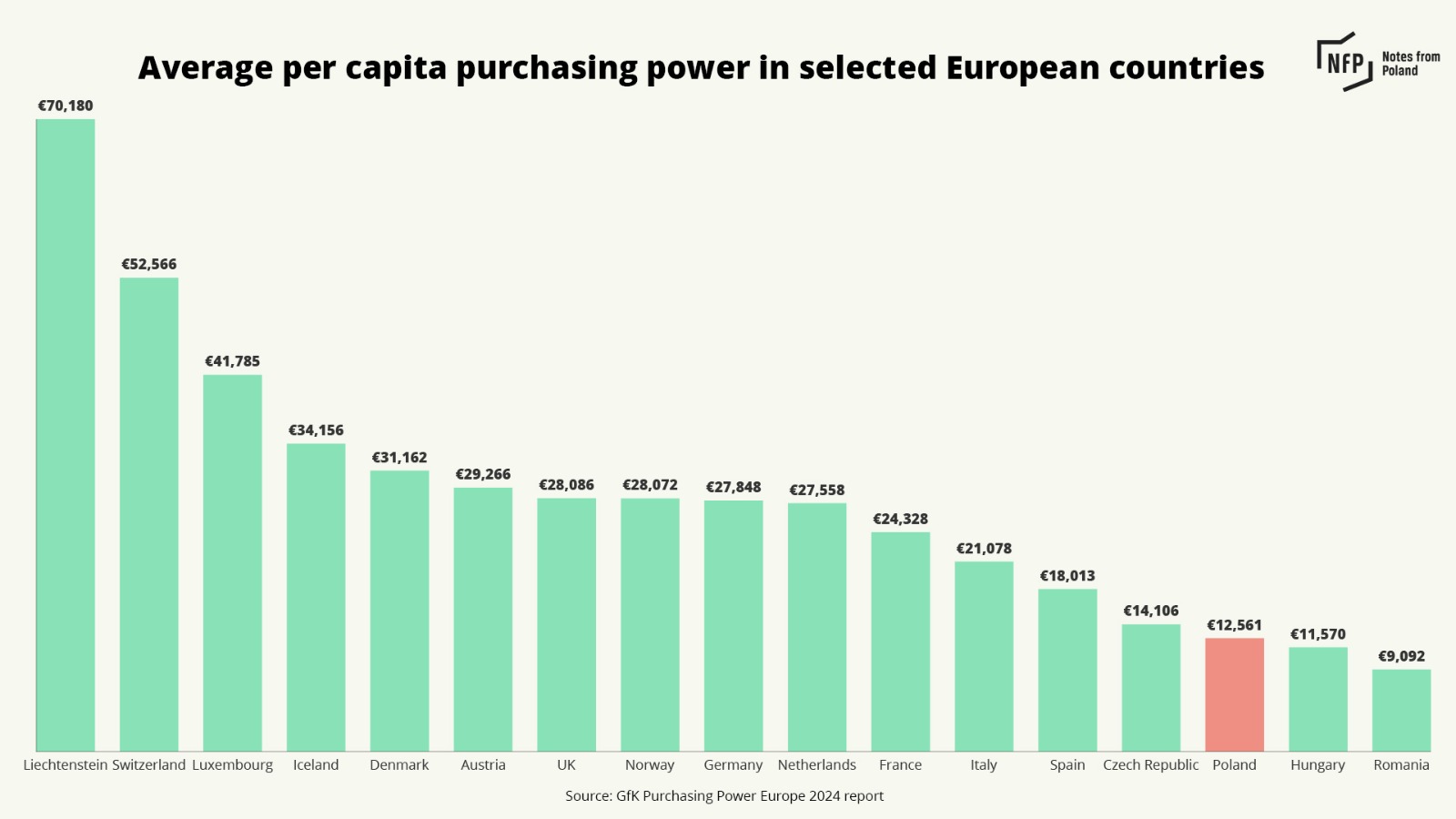
The city with the highest purchasing power in Poland was the capital, Warsaw, with a figure of €19,878. That was 5.9% above the European average and 58% above the Polish national average.
Warsaw’s figure was also above those of Prague (€18,667) and Budapest (€15,029), the capitals of the Czech Republic and Hungary respectively, and not far behind the Spanish capital, Madrid (€22,426).
After Warsaw, residents of the coastal resort town of Sopot (€19,084) had Poland’s highest purchasing power, with Wrocław, Katowice, Płock, Siedlce, Poznań, Kraków, Bielsko-Biała and Gliwice making up the rest of the top ten.
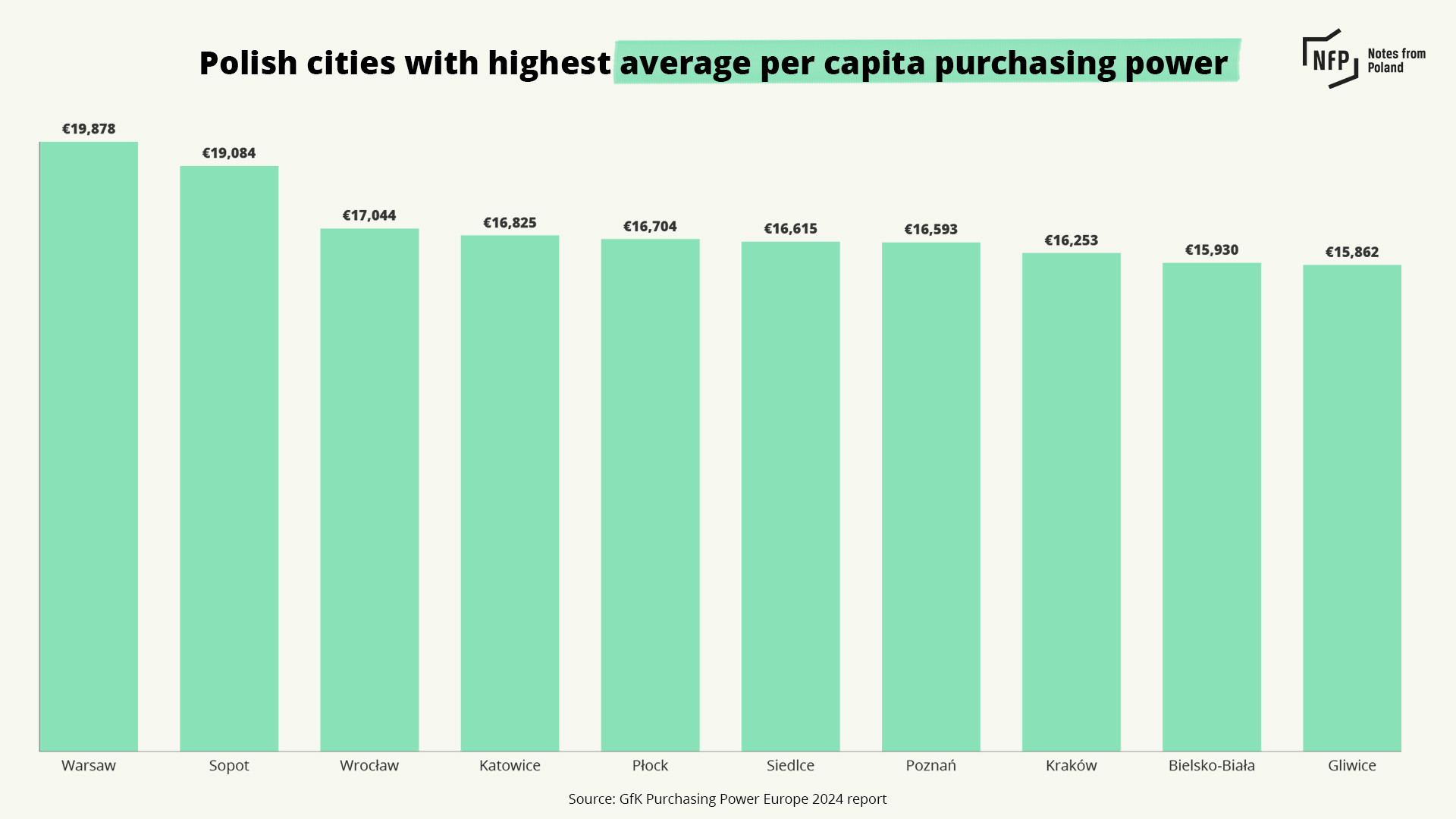
Various indices have shown that Poles, once one of the EU’s poorest nations, have become more wealthy in recent years. In 2015, Poland surpassed Greece’s GDP per capita at purchasing power parity, followed by Portugal in 2021.
In 2022, Poland overtook Spain in an index comparing actual individual consumption of households.
Figures from the Organisation for Economic Co-operation and Development (OECD) also show that, in terms of average wages adjusted for working hours and the cost of living, Poland is ahead of Portugal and Greece, though behind Spain.

Notes from Poland is run by a small editorial team and published by an independent, non-profit foundation that is funded through donations from our readers. We cannot do what we do without your support.
Main image credit: Kaboompics.com / Pexels

Alicja Ptak is senior editor at Notes from Poland and a multimedia journalist. She previously worked for Reuters.

